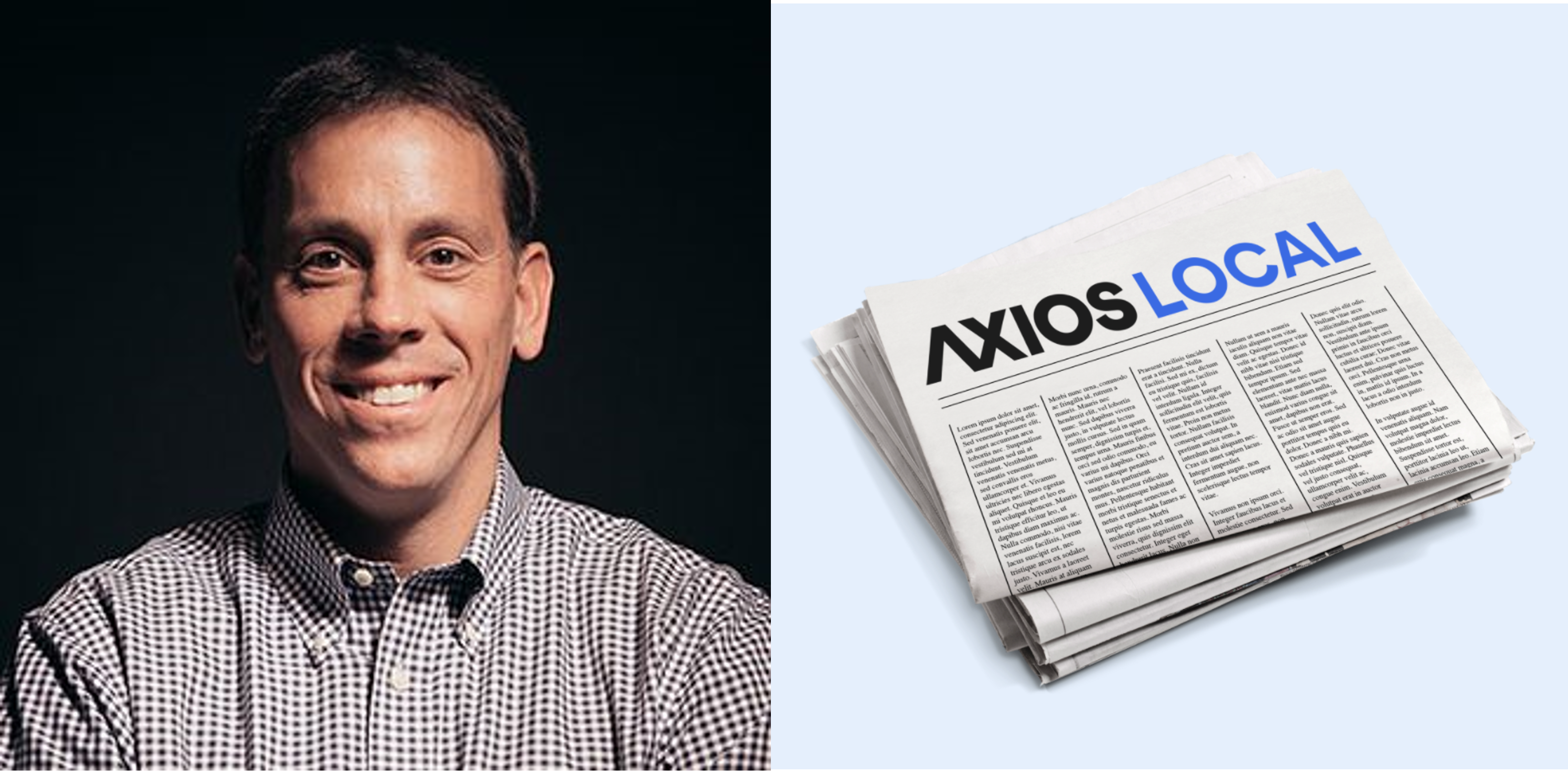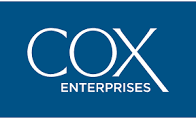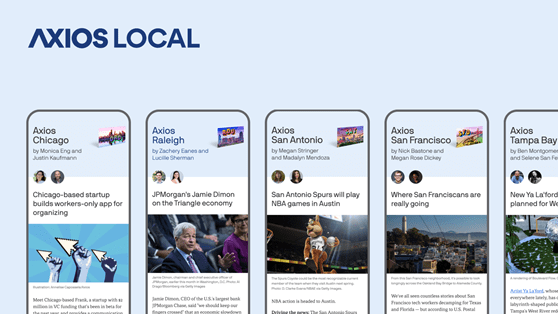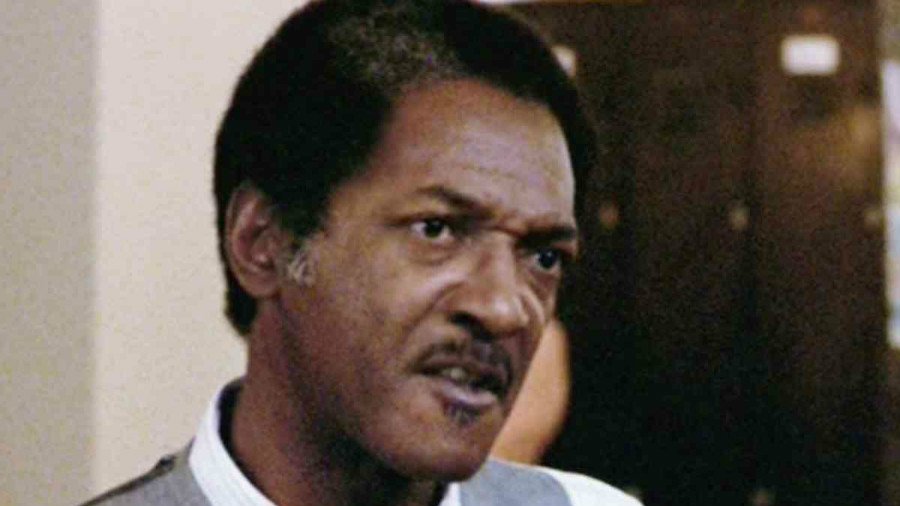
We have talked, debated, and even argued about the value of “local” in radio. Those who dismiss its value frequently point to the success of syndicated shows that are often in leading position in their affiliate markets. Or they aver that being local is overrated, left over from radio’ glory days in the 60’s or 70’s.
I maintain thee position that serving local communities (aside from being mandated in radio licenses) has only become more important in recent years, driven both by COVID and local politics.
While the pandemic was global, affecting everyone on the planet, its effects were (and still are) being felt regionally, and often locally. Issues that included testing locations, mask mandates, and vaccine availability were all local in nature. Similarly, the political landscape is now rife with local issues, impacting cities, counties, townships, and municipalities. What your school board is up to and who sits 0n your courts, county seats, or state capitols is of paramount importance to your quality of life. Biden and Congress may be passing legislation, but the rubber hits the road locally.
Jacobs Media has done an immense amount of research these past couple years in local public radio markets, enough to realize that while there’s no shortage of national and international news, local reporting is often wanting, spotty, or non-existent. The term “news desert” has become popular because it applies to more and more bergs, towns, and regions.
Even though the pandemic has been the death knell for many hometown newspapers, the arrows were pointing down long before we started wearing masks and social distancing. Many areas don’t even a daily paper – print or online – and broadcast TV news coverage is often a joke.
Then there’s commercial radio, where news as a content category has been missing in action for years or has been exiled to the AM band. And then there’s public radio, which has benefitted as a result (check the ratings), picking up much of the slack. Great programs like NPR’s “Morning Edition” and “All Things Considered,” along with APM”s “BBC News Hour” (and “BBC News Service” in the later hours) have become “must listen” for millions of consumers here in the U.S.
 But when you look under the public radio hood, few stations devote substantial hours during weekdays or weekends to local news coverage. Original news programming is expensive, both in human and financial resources. It requires, time, patience, and most often, Herculean efforts to keep pace with news shows that are network originated. It is often easier and more expedient for local public radio stations to purchase network and syndicated shows, rather than committing to expensive DIY local programming.
But when you look under the public radio hood, few stations devote substantial hours during weekdays or weekends to local news coverage. Original news programming is expensive, both in human and financial resources. It requires, time, patience, and most often, Herculean efforts to keep pace with news shows that are network originated. It is often easier and more expedient for local public radio stations to purchase network and syndicated shows, rather than committing to expensive DIY local programming.
But what’s the real cost of both commercial and public radio companies and organization looking the other way despite an obvious need for stepped-up local news coverage?
That someone else will come in and challenge radio – and other media outlets – for the local mantle.
Like Axios.
Eleven months ago, I wrote a post that kicked off the new year:
“Did Axios Just Lay Down The Gauntlet On Local Media?”

Axios CEO Jim Vandehei had just published a “manifesto” about what the organization hoped to accomplish in 2022. He made the case that local news matters.
Last January, Axios had a solid presence in 14 U.S. markets, with another 25 on the way by midyear. Vandehei talked about a goal of 100 markets “soon thereafter.”
He went on to state how could pull this off with a reliance on his newsletters in each Axios city “covered by locals, for locals.” And he urged local journalists to join his team by signing up for “our crusade.”
Finally, with language eerily familiar to everyone in public radio, he made this request for funding:
“Become a Axios Local Member – all donations flow straight to local journalism.”
Pretty bold for a commercial enterprise, wouldn’t you say?
 The one thing Vandehei didn’t mention (probably because he didn’t know it would happen) was that Axios would be acquired this year by Cox Enterprises – the same Cox that owned all those newspapers, TV and radio stations. (Today, the company called Cox Media Group is owned by Apollo Global Management, a private equity company.
The one thing Vandehei didn’t mention (probably because he didn’t know it would happen) was that Axios would be acquired this year by Cox Enterprises – the same Cox that owned all those newspapers, TV and radio stations. (Today, the company called Cox Media Group is owned by Apollo Global Management, a private equity company.
That’s right. The original “Cox” sold off almost all their legacy media properties and purchased Axios for a cool $525 million last August. The Cox family, led by fourth generation family member, Alex Taylor, is making his future bets about where local news is headed very transparent.
Last week, I received an email update from Vandehei (along with millions of other Axios subscribers). While he failed to mention the Cox acquisition, he continued his theme that supporting Axios represented a higher mission:

In this new missive, Vandehei reports Axios is now in 24 markets (not bad for a tough economic year). This growth includes Boston, Chicago, Austin, Denver, San Francisco, Raleigh, and Salt Lake City. Next up; San Antonio and Cleveland.

He also talks about live events with “local officials and business leaders” in Minneapolis/St. Paul and northwest Arkansas (where Walmart and others are located).
Their coverage is smart. I subscribe to their newsletter in my hometown of Detroit. And their email messaging is strategic and interesting. Last week, I received an email from Axios Detroit with a subject line that would only resonate with locals:
“Axel Foley’s boss”

It was a feature story on the late Gil Hill (pictured) , the local Detroit official who ended up with a cameo role in the 1980’s hit “Beverly Hills Cop” starring Eddie Murphy. It’s how you capture the attention of proud Detroiters.
Broadcast radio has had a trying, challenging 2022 with pressure continuing in the new year, exacerbated by virtually no political dollars. Meantime, Axios continues to build an impressive empire.
And how difficult would it be for them to expand into audio in the not-too-distant future? The New York Times did it brilliantly with “The Daily” back in 2017. And the Cox family knows a little something about audio (and video) news reporting.
Outside of the top 20 or so markets, commercial radio doesn’t appear to be especially interested in news. It’s expensive and people-intensive with an arduous ROI. Public radio is a different story. Many have a foothold in local coverage.
 And as noted earlier, a content analysis of most public radio stations would reveal a low percentage of locally-originated programming. Most of the shows consumers know, love, and help pay for come from a network such as NPR or APM. Aside from local reporting in the popular national news magazines, “Morning Edition” and “All Things Considered,” some stations air one issue-oriented/talk show in the middle of the day.
And as noted earlier, a content analysis of most public radio stations would reveal a low percentage of locally-originated programming. Most of the shows consumers know, love, and help pay for come from a network such as NPR or APM. Aside from local reporting in the popular national news magazines, “Morning Edition” and “All Things Considered,” some stations air one issue-oriented/talk show in the middle of the day.
Is that going to be enough content to maintain ownership of the “local hill?”
Notably, there’s a glaring lack of “local” positioning on most public radio stations, as if the audience will simply “Zen it.” Not likely in this overcommunicated news environment.
I’ve spoken with many public radio programmers and news directors since Axios’ shot across the radio bow. Most aren’t especially concerned about this newcomer. When I mention the goals in Vandehei’s “manifesto,” I often hear responses like “We’ve been doing that for years” or “We tried that – it didn’t work.”
As former NPR chieftain tried to communicate to the legions of public radio professionals across the country, messaging and marketing plays an essential role the medium’s mission. It is not enough to produce and broadcast great content – it is essential to communicate it to listeners and members. Historically, this has not been one of public radio’s strong suits.
I’ll end today’s post the same way I concluded our Axios post in early January – with some “Game of Thrones” strategy:
“There’s no moat deep or wide enough to keep the invaders from attacking. For radio news operations – commercial or public – it’s time to don that suit of armor, grab a sharp lance, and get on your steed. Oh, and perhaps focus on creating even better local news content that matters to the townspeople, and making the time and effort to effectively market it.
operations – commercial or public – it’s time to don that suit of armor, grab a sharp lance, and get on your steed. Oh, and perhaps focus on creating even better local news content that matters to the townspeople, and making the time and effort to effectively market it.
“Your local kingdom is being invaded, and the solution is to be so good that a mace, battle axe, or dagger won’t throw you off your horse.
“Pick up the gauntlet, and fight the good fight.”
- What To Do If Your Radio Station Goes Through A Midlife Crisis - April 25, 2025
- A 2020 Lesson?It Could All Be Gone In A Flash - April 24, 2025
- How AI Can Give Radio Personalities More…PERSONALITY - April 23, 2025




I agree we need to be aggressive with our local news position and work — and it is still clear, that while Axios talks about serving news deserts, they remain focused on larger cities. We should learn from them, however! Thanks for the insights.
For now, Susan, you are right. But in just the past year, Axios has greatly expanded its reach. It may just be a matter of time. Thanks for the comment.
I interviewed him such a smart guy!
I would like to!
Essential! Thank you, Fred!
Appreciated, Clark.
Fascinating.
Local communities need it, the industry needs it, democracy needs it. Journalism (with a capital J) is Expensive (with a capital E.) Here’s hoping their strategy goes beyond altruistic wishful thinking.
Couldn’t have said it better, Beverlee. This is more than just about winning an image.
Totally agree
Fred, always love what you write, (here comes the) BUT I was surprised that you didn’t make reference to our local situation here in the Detroit area. When Dick Haefner, former news director retired from the once Great Voice of the Great Lakes, WJR AM 760, the entire news room left the building. This one-time bastion of news, talk and information only runs a few minutes of Fox news on the hour. This is no doubt an attempt to lower costs. WJR’s ownership is doing a stellar job of helping to destroy a once great station that Michiganders could once rely on. That responsibility is now exclusively maintained by Audacy’s WWJ 950 AM. You and I both remember 50+ years ago when top 40’s like WKNR Keener 13 had a news room with over ten people in it. CKLW, when the late Byron MacGregor was in charge, and still in his late 20’s, boasted a news department of over 25 people and the fast-paced “blood & guts” style news was NOT a tune-out factor and was widely replicated on other hit music stations across America. Local news CAN be both informative and entertaining, it just takes effort, which is in short supply.
Art, it is difficult to compare what passes for radio news in 2022 to what we remember from the 70’s and 80’s. But the same is true for the News, Free Press, and well as channels 2,4,7, and 50. It’s a different day, and Axios is trying to win it all. Thanks for the comment.
I would suggest Art makes a good point. Don’t know much about WJR, but CKLW’s newscasts (as well as CHUM, KHJ and a few others) were full of excitement and fast paced authority grossly lacking in many examples of “news” these days. J. Paul Huddleston. Dick Smythe, Lee Marshall – just a few of the incredible news “performers” who appeared on radio in the 60s and 70s. Before that? Gabriel Heater. Edward R. Murrow. Drew Pearson – and the ultimate Paul Harvey. These folks weren’t rip ‘n readers. These folks were entertainers who happened to be relating the day’s events to their listener. Only a few can do that in 2022. Very few. If someone can develop the ability to communicate and entertain at the same time-with the proper editorial judgement, you’ll find that it can work. Trouble is, no one wants to do that in 2022. Here in Southern California we have access to 3 stations that claim to be experts at “local” news. The delivery on two of them is as clinical as can be. The third (KFI) is a great lesson on how good a news department can be. In my opinion they could go a bit further in making the newscasts more compelling but compared to everything else you hear these days it is nearly perfect. So, while it IS a different day, entertainment value can create trust-and create a loyal audience. Thanks for getting me started!
Dave, no argument with Art. But comparing what radio was like in the 70’s to today’s product creates unrealistic comparisons. It’s like what you hear on sports/talk stations when they debate whether Magic Johnson could have outscored LeBron James. It was a different game.
That said, entertainment value is essential, whether it’s Byron MacGregor on CKLW back in the day or a news presenter on KNX, WTOP, or WNYC.
I’m late to this post (thank you, Covid for my first–and hopefully last encounter–with you) but on the unlikely chance Dave sees my reply, I have to say THE name I’m sure he’ll appreciate who will always mean “news” for me was Richard Mock. But I also have to say Lee Marshall was “GRRREAT”!!! (Marshall was a local, big-deep-voiced newsman who was also one of the voices of Tony the Tiger–and also a sweetheart of a man.) Can’t even write of these guys who so inspired me to get into radio without a heart of thanksgiving for them all.
Thank you for writing this, well said. I guess to repeat what’s been said already but I can recall a great deal of the sarcasm of Uncle Lar here in Chicago; but there was also news as well.
I think the best talk station we had was WIND (when it was owned by Group W). The different hosts opened up the hour with topic “x” and took calls from all sides of the issue.
When it was time to move to FM….there were news departments there as well. The presentation of the content was modified and personalized towards the target audience. A little hipper, younger sounding.
I give credit to WBEZ-FM for buying the Chicago Sun-Times and taking it in a not-for-profit direction. That deal is still playing out in real time.
Jerry, I write a lot about WBEZ’s big move with the Sun Times because it could enable to become the local news source in Chicago. Yes, a lot can go wrong – staff cultures, integration, and too many silos, for starters. But it is a fascinating strategic move that underscores the value of local news in vibrant markets. We shall see.
So much for the notion that local stations and the free market would intuit what was best for their community when the Fairness Doctrine was ditched and FCC requirements for a certain amount of news programming being done were relaxed. Followed by the allowance of broadcast companies owning more stations in single markets and nationwide. Virtually all commercial stations ditched news because it was expensive, thinking nothing about the negative impact dropping it would have in their communities. All pure profit decisions.
Throw in the ease of plugging in partisan talk on commercial stations and loading up with public radio’s syndicated winners and we’re 30 years into a collapse of attention to local news that was easy to predict. But we all let it happen.
The VERY FEW stations that stuck with it will have a leg up as the pendulum swings back toward a realization of the inevitable need to have an informed public. Ultimately AXIOS will have to make it pay to sustain it. Unless we also swing back to an idea that we maintain some “loss leader” departments in our operations because it’s the RIGHT THING TO DO for our communities. It wouldn’t hurt if license renewals weren’t such a joke as they are now and actually cared anything about real community service as a requirement for renewal.
Thanks as always Fred for making the important points in your dispatches. And sometimes revisiting the authenticity of older ways is not empty nostalgia. It’s smart “learning from our mistakes” intelligence.
Paul, as always, I appreciate your wizened perspective on the issue of local news. Your second paragraph says it all. Both commercial and public radio stations in hundreds of local markets have taken the easy way out with partisan talk and over-reliance on network shows. The net net on all this is that great local coverage as become a rarity in many radio markets, opening the door for an entity like Axios – now owned by Cox Enterprises – to take a shot on the “local hill.” It will interesting to see how this plays out.
Fred, definitely good words to write, and for many, good words to hear!
But as usual, when industry leaders write of local radio, they write of markets rated by Niealsen.
There are hundreds, if not, thousands, of local radio stations, serving small, or micro, markets all across America that do local journalism, right!
Our stations in Northeast Iowa have dedicated news professionals that attend meetings, get actualities, post pictures and video, and truly serve our communities with great local journalism. And our morning shows feature, not 1, not 2, but often 3 longform interviews with local newsmakers, school officials, boy scouts, 4-H members, city officials and do-gooders every weekday morning. It’s not something we bury on the weekend.
The one thing I was challenged to hear was the self promotion of what we do. Admittedly, we are not good at that, and we must be better!
I’m glad for what you wrote, and we can be better than we are, but don’t forget about the many full service AM and FM stations serving our local, small markets across the United States.
Jim, I am guilty of getting caught up by PPM markets, and not always seeing what’s going on in “flyover country.” Sounds like your guys are on the right track, serving your communities. (Just be sure to remind them you’re doing it.) Thanks for the comment.